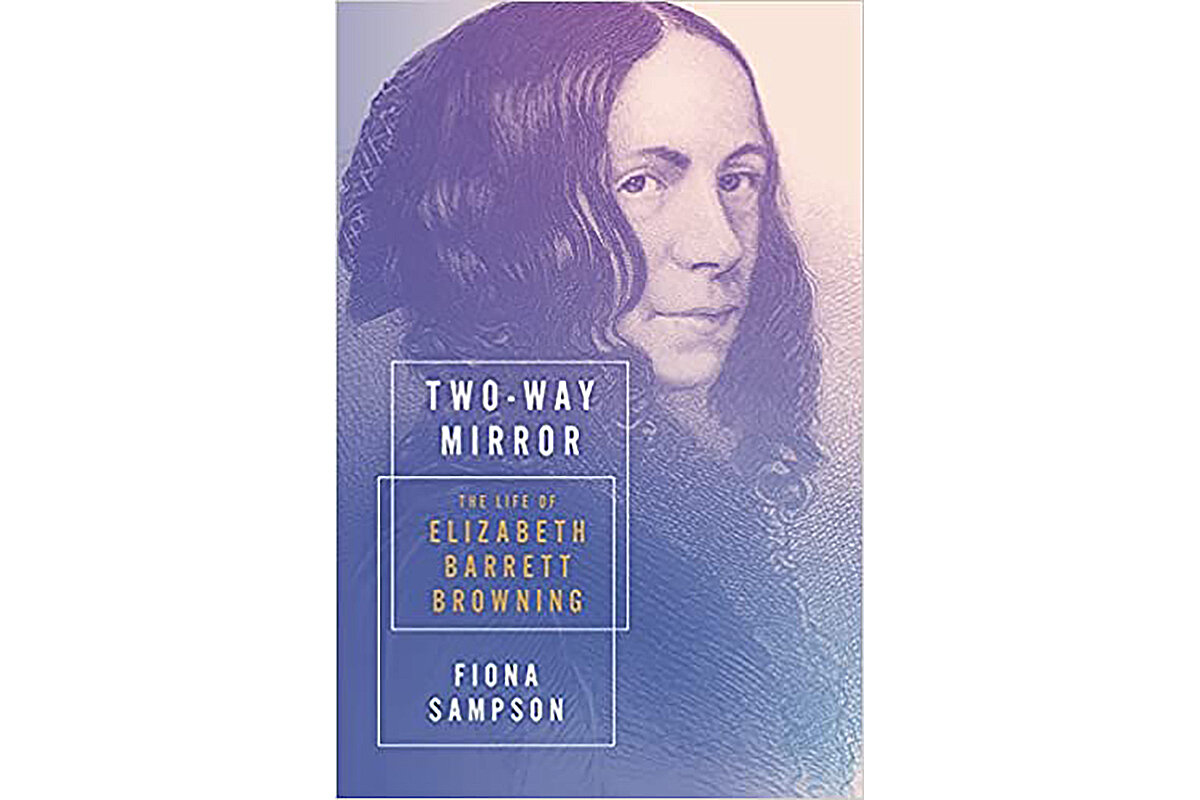‘How do I love thee?’ A Victorian-era poet finds liberation.
Loading...
During her lifetime, Elizabeth Barrett Browning (1806-61) was widely regarded as Britain’s best female poet. Her groundbreaking work helped sway public opinion against slavery and child labor and changed the direction of English-language poetry for generations.
Yet within 70 years of her death, Barrett Browning was no longer viewed as an international literary superstar but as an invalid with a small, couch-bound life. By the 1970s, critics described her as lacking the talent of her husband, Robert Browning, and hindering his writing.
Fiona Sampson challenges those views in “Two-Way Mirror: The Life of Elizabeth Barrett Browning,” the first new biography of the poet in more than 30 years. Sampson, whose works include the critically acclaimed biography “In Search of Mary Shelley,” reframes Barrett Browning’s reputation by highlighting her development as a writer despite the many restrictions she faced in Victorian society.
Why We Wrote This
What did it take for a woman in Victorian times to be seen as an artist in her own right? For one of Britain’s most famous poets, it meant separating her ideas from those of her father and husband.
As a child, Elizabeth Barrett – called “Ba” by her parents and 11 siblings – defied expectations. She penned her first poems at the age of 8 and began reading Homer, Shakespeare, and Milton, guided by her mother. For her 14th birthday, her father paid to have 50 copies printed of “The Battle of Marathon,” a 1,500-line moral tale she wrote in heroic couplets.
Her life changed profoundly a year later when she developed an illness that doctors tried to treat with prolonged bed rest and dangerous remedies, including opium. Despite her confinement, which would continue for most of her life, the young poet’s writing flourished. Her work was published, drawing the attention of two male mentors. One, like her father, encouraged her talent as well as submissive dependency on his guidance and approval.
Sampson presents a comprehensive view of the obstacles the young poet faced: illness, devastating personal losses, fluctuating family fortunes (which were tied to slave labor in Jamaica), and rigid cultural and social norms.
By her late 30s, she had gained the support of a savvy female mentor. She also won acclaim on both sides of the Atlantic.
“Two-Way Mirror,” which combines astute scholarship and fluid storytelling, becomes riveting when the poet, at age 38, receives a glowing letter from Robert Browning about her latest book, “Poems.”
“I love your verses with all my heart, dear Miss Barrett, ... into me has it gone, and part of me has it become, this great living poetry of yours, not a flower of which but took root and grew. I can give a reason for my faith in one and another excellence, the fresh strange music, the affluent language, the exquisite pathos and true new brave thought – but in this addressing myself to you, your own self, and for the first time, my feeling rises altogether. I do, as I say, love these Books with all my heart – and I love you too.”
What begins as a correspondence between poets blossoms into a series of surreptitious meetings in Barrett’s room. She wants to hide those unchaperoned visits from her father, who would not approve of her falling in love or leaving his home and control.
The match seems unlikely at first. Browning is six years her junior, lives with his parents, and does not have a job, preferring to work on his poems instead. Yet the two share literary aspirations and affection, and she increasingly wants independence.
After the couple secretly marry, Barrett Browning hastily packs two smallish bags, including her husband’s letters and a manuscript that will become “Sonnets From the Portuguese,” one of her most beloved, enduring works. Her devoted maid helps the couple navigate their escape to Italy, where Barrett Browning finds freedom and a more powerful poetic voice, along with daunting challenges.
Sampson, who writes in present tense, does a wonderful job of following the couple’s evolution and writing. In doing so, she corrects the simplistic version of their relationship that popular culture has promoted. She also illustrates how Barrett Browning’s work challenged Victorian notions about women and women’s writing.
Sampson, a poet herself, bases the structure of “Two-Way Mirror” on “Aurora Leigh,” a nine-book verse novel that Barrett Browning published at age 50. An immediate bestseller and a masterwork, “Aurora Leigh” explores the artistic development of its heroine.
Sampson uses both “Aurora Leigh” and a complex, contemporary lens to understand how Barrett Browning defined herself, and why her struggles speak to our own. The result is a powerful restoration of the poet’s reputation and legacy.







